For the Nuit des Musées 2010, Anja Erdmann and Maxie Götze created the work, Luftikus – installation with moving fans.
Concentrated within a closed space, wind and light - essential elements of the Arles landscape - were the sensitive materials for this installation. The wind was the source and the cause of the sounds. It created capricious shadows on the walls, thanks to small computer-controlled fans, which became visual objects as well as performing an acoustic function. Luftikus was presented again for Musée Réattu, Acte V.
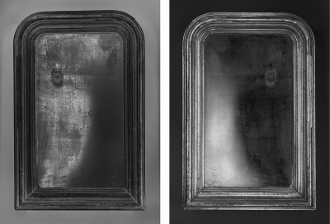
A physicist by discipline, Patrick Bailly-Maître-Grand's wide-ranging visual research draws on his interest in "all material work which lies outside the represented image." He is constantly experimenting with different techniques, from photograms to camera obscura as well as Daguerréotypes. This provides as many materials as it does endlessly new arrangements, combining natural sciences, architecture and metaphysics. Les Gémelles, a diptych reuniting the positive and negative image of an old mirror captured in a darkened room, contains a mystery: the absence of a reflection... how did Patrick Bailly-Maître-Grand obtain this image of a mirror, full frontal and on a 1:1 scale, without projecting the reflection of the camera lens, despite being barely centimetres from the object?
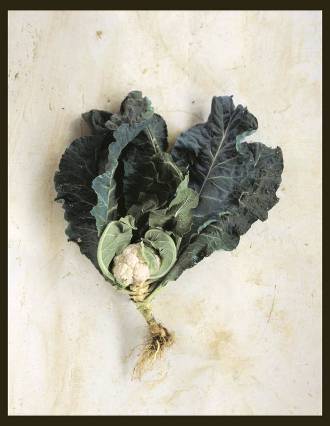
The group of photographs entitled La racine des légumes, co-signed by Jacqueline Salmon and Robert F.Hammerstiel, serves up a series of life-size portraits of vegetables. While in the market or in the kitchen, they are shorn of their natural shape (minus roots, stalks or branches), here they are resplendently complete. Barely out of the soil, they are presented in their prime, at the moment when their shapes and colours are the deepest and most opulent. But the tipping point into wilt and decay is near, perhaps already at hand.
It is this ambiguity that the two photographers have set out to capture in their work, which can be viewed as a metaphor for the stages of our lives that we carry within ourselves, simultaneously - like an essay on the representation of the essential, hidden parts of our lives.

Carmen Perrin foremost sculptor , drawing practice for 6 years. The series of Tracés tournés , started in 2008, focuses on the notions of space, matter and force. Inspired by the potter's wheel, these drawings are made on a turntable which the artist can control the direction and speed . She draws by pressing graphite or colored pencil on paper. gradually as the material is deposited, the surface changes, eventually curl and acquire a third dimension : that of sculpture. Entry into collections of this exceptional work, thanks to the generosity of a friend collector, translates close longtime ties with Catherine Putman, which specialized in contemporary design gallery surrogate Carmen Perrin in France. Delicate tribute to his memory, this acquisition underlines at the same time the importance of this essential trio for the dissemination of works: the gallery, the sponsor and the museum.
Throughout his career, Vincent Barré has revealed his concerns with the body through his sculptures and drawing. Gradually, this has led him towards abstractions of fullness, of hollowness, of the living, and to these large forms made of iron, aluminium or clay. The figuration seen in his previous work, and linked to verticality, has given way to earthy, mainly recumbent shapes. Double-coque, acquired in 2009 by the Association des Amis du musée Réattu, is a perfect example.
From the start, however, the theme of the ex voto has cropped up regularly in his work, sometimes stemming from a compelling event in his personal life : it is a form of meditation on a vulnerable body - his own - or on an organ which suddenly makes its existence known.
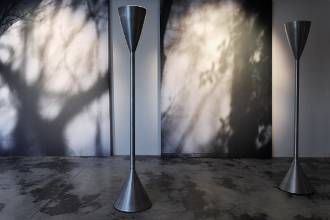
The artistic practice that Jocelyne Alloucherie developes over thirty years, between sculpture, architecture and photography, examines the relationship between the exposure and the visitor through monumental devices often combining elements in three dimensions and photographic images ; its reflection focuses on the complex relationship that is played between the perception of the physical space and the most intimate places of mental space , away from anecdotal relation to reality.
L'Envers was designed in Venice in 2004, during one of these urban wanderings the artist loves. Consists of 5 very large pictures printed on canvas, laid on the ground and 5 streetlights turned metal, also designed by the artist, the device is deployed across an entire room, operating in the near and the distance, the inside and also memory and reflectio . Streetlights evoke the famous Venetian torchlight processions. Their presence helps to produce the contraction of time that is at the heart of the poetics of the artist and the viewer's body that is deeply involved .
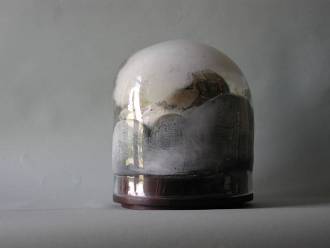
Françoise Vergier's work occupies the boundary between sculpture and painting, and constantly probes the links between art and nature. Tu accompagnes is part of a series of works realised in collaboration with the CIRVA (Centre International de Recherche sur le Verre et les Arts Plastiques, based in Marseille). The work produced at the Centre, mid-way between decor and sculpture, preserves this harmonious relationship with nature: the painted, blown glass dilates the drawing contained in the clay form it encloses, adding a cloudy veil and creating the shape of a landscape.
This approach to landscape reveals a virtually photographic quality, in which the artist's miniature worlds appear as though viewed from high up in the sky.
The notion of the studio, the laboratory, lies at the heart of the Réattu museum's scientific and cultural project. Preserving the studio of the painter Jacques Réattu in its original setting opposite the Rhone, the museum has always been sensitive to the way in which the works and their setting become historically interwoven. This allows the works to fully assume their place within the collections. This awareness applies not only to the museum's relationship with artists, but also its philosophy on acquisitions.
The idea of acquiring what Marcel Robelin from the outset called his "Project Wall" involved incorporating into the collection a whole wall belonging to the artist. In his busy compositions, Marcel Robelin amasses an incredible number of the salvaged objects, fragments of works and small sketches that underpin his work. Among them are salvaged metal railings and floor tiles whose motifs he extracts, accumulated paper off-cuts, re-workings etc.
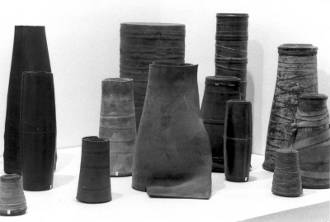
Evelyn Ortlieb's work questions above all the notion of script, using unexpected supports that lend themselves to writing and drawing (slate, textiles, industrial materials), and sometimes experimenting with the properties of her materials. She accentuates the script inherent in each object, intensifying its structure, its lines of strength and its flaws. Her work gives a pride of place to drawing as a visual approach in its own right, especially when it operates in tight alliance with the act of sculpting and painting.
The artist died in 2009 and her family turned first to the Réattu Museum (which already owned two of her works), inviting it to make its own selection from the contents of her studio.